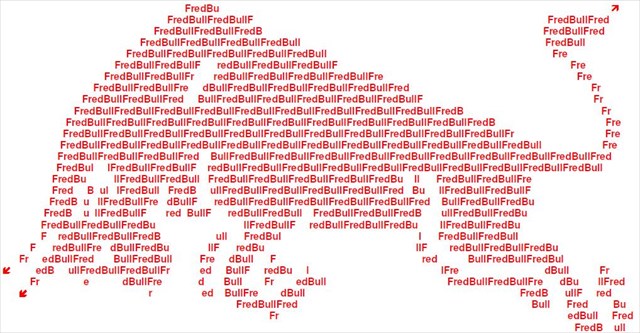 |
|
Ein schönes Beispiel der Zusammenarbeit von Geologie und Biologie
|
|

|
Kalktuffquellen entstehen durch kalkhaltiges Wasser, das durch die Erhöhung der Temperatur und Druckentlastung Kalksinter ausfällt. Eine entscheidende Rolle bei der Bildung der Kalktuffe besitzen feuchtigkeitsliebende Pflanzen, insbesondere Moose. Diese Moose entziehen durch Photosynthese dem Wasser zusätzlich Kohlendioxyd und tragen damit zur Ausfällung von Kalziumkarbonat bei. Diese Moose werden mit der Zeit vom Kalktuff überwachsen und bilden steinige Polster.
|
|

|
Fauna:
Auch die Fauna ist interessant: als quelltypische Fauna von Kalktuffquellen sind neben Bachflohkrebsen, Quelljungfern, Quellschnecken, genabelte Puppenschnecken auch vereinzelt Zwergdeckelschnecken zu finden. Die Larven von bestimmten Arten von Stein- und Köcherfliegen, die auf kalkhaltiges Wasser angewiesen sind, sind ebenfalls an Kalktuffquellen anzutreffen.
|
Vorkommen:
Kalktuffquellen sind genetisch an die Verbreitungsgebiete von karbonatischen Gesteinsformationen (Kalkstein, Dolomit) gebunden. Kalktuffquellen sind ein relativ selten verbreiteter Quelltyp. In Europa treten derartige Quellen beispielsweise in den Kalkalpen, im Bereich des von meist kalkigen Gletscherkiesen bedeckten Alpenvorlandes, in der Fränkischen und Schwäbischen Alb an der Kreideküste Jasmunds, aber auch punktuell in anderen Regionen auf.
|
|

|
Gefährdung:
Kalktuffquellen sind sensible Biotope. Gefährdet sind sie durch Mensch und Tier, schon die Trittbelastung kann zu empfindlichen Störungen oder zur Zerstörung führen. Auch führen Grundwassersenkungen zum Sterben von Kalktuffquellen. Düngemittel sind auch ein Zerstörer, sowie Rodungen und technische und touristische Quellfassungen.
|
Schutz von Kalktuffquellen:
Aufgrund der Seltenheit und Kleinflächigkeit der Bildungen, der schützenswerten standortgebunden Flora und Fauna sowie ihres hohen Gefährdungspotentials werden Kalktuffquellen häufig als Biotope, Naturdenkmäler, Geotope sowie als prioritär schützenswerter Lebensraum ausgewiesen. In einigen Ländern wurden spezielle Programme zum Schutz und Erhalt von Kalktuffquellen im Rahmen des Natura 2000-Programms aufgelegt.
Quelle: Wikipedia
|
Logaufgabe:
Um den Earthcache loggen zu können, beantworte bitte folgende Fragen:
1. Betrachte den Kalktuff. Man kann gut die Entwicklung des Kalktuffs sehen. Nenne mir mindestens zwei Beschleuniger zur Bildung von Kalktuff.
2. Was ist der Unterschied zwischen normalem Kalkgestein und Kalktuff. Betrachte die Stelle und beschreibe mit eigenen Worten.
Ich würde mich über ein Foto an der Stelle freuen.
Du brauchst nicht auf die Logfreigabe zu warten. Wenn mit deinen Antworten etwas nicht in Ordnung ist, melde ich mich bei dir und verhelfe dir zu den richtigen Antworten. Aber beachte bitte die Reihenfolge: zuerst Antworten schicken und dann loggen.
Die Übersetzung wurde lektoriert von: Nembug |
|
Ein Earthcache by  2015 2015
|
 |
| A good example for the cooperation between geology and biology |
|

|
Tufa springs are caused by hard water which is released by the increasing pressure and temperature. A crucial role in the formation of tufa own moisture-loving plants, especially mosses. These mooses release carbon dioxide through photosynthesis and water in addition thereby contribute to the precipitation of calcium carbonate. Over the centuries these mosses are overgrown with tufa and they accumulate as a rocky cushion.
|
|

|
Fauna:
The fauna is also interesting: a typical fauna of tufa springs are; gammarus, cordulegastridae, spring snails, umbilicate pupillidae and you will occasionally find dwarf snails. The larvae of certain types of stone and caddis flies, which are dependent on hard water areas are also to be found on tufa springs.
|
Occurrence:
Tufa springs are genetically linked to the distribution areas of carbonate rock formations (limestone, dolomite). Tufa springs are a relatively rare type of spring. In Europe such sources, for example, in the Limestone Alps, in the area of covered by mostly calcareous glacial gravels Alpine foothills, in the Franconian and Swabian Alb on the chalk cliffs Jasmund, but also selectively in other regions occur.
|
|

|
Hazard:
Tufa springs are sensitive habitats. They are endangered by humans and animals, even the tread load can lead to serious disruption or destruction. Also cause groundwater reductions to death of tufa springs. Fertilizers and deforestation also contribute to the destruction as well as technical and touristic motivated modifications.
|
|
|
Protection of tufa springs:
Due to the rarity and the small areas of these formations, the protectable and static sites of flora and fauna as well as the severe potential of endengerment, tufa springs are often reported as biotopes, natural monuments, as well as priorities geotopes worth protecting habitat. In some countries, special programs for the protection and preservation of tufa springs under the Natura 2000 program were launched.
Source: Wikipedia
|
Your task to log this earthcache:
To be able to sign the Earthcache, please answer the following questions:
1. Consider the tufa. You can easily see the development of the tufa. Give me at least two accelerators to the formation of tufa.
2. What is the difference between normal limestone and tufa. Consider the location and describe in your own words.
I would be happy about a photo on the site.
You do not need to wait for the log permission. If something is wrong with your answers, I'll send you a mail and help you to the correct answers. But please note the order: first email the answers and then sign. Happy hunting.
The Translation was proofread by: Nembug
|
|
An earthcache by  2015 2015
|